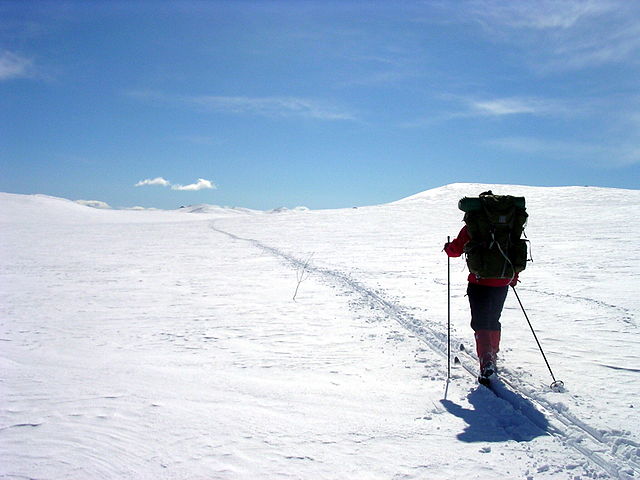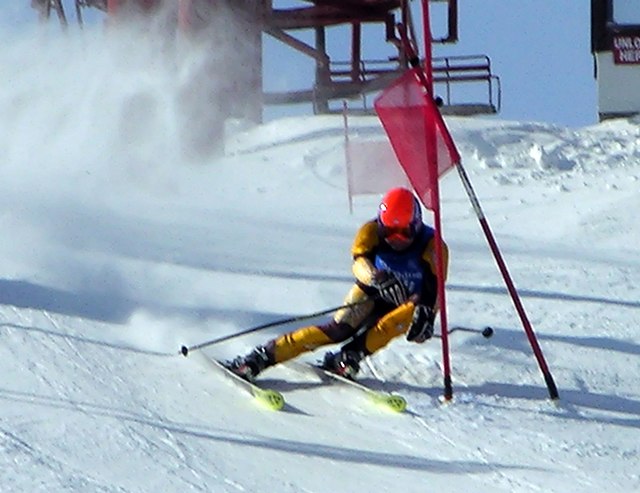Ski boots are footwear used in skiing to provide a way to attach the skier to skis using ski bindings. The ski/boot/binding combination is used to effectively transmit control inputs from the skier's legs to the snow.
A typical "universal" ski boot of the leather era. This example, by G. H. Bass, includes an indentation around the heel where the cable binding would fit, and a metal plate at the toe for a Saf-Ski release binding. The leather strap is a "long thong", used by downhill skiers to offer some level of lateral control.
A pair of modern front-entry alpine ski boots made by Salomon. As with almost all modern examples, four buckles are used to close the openings at the top of the foot and front of the leg to produce stiff cylindrical forms. Above the top buckle on the leg is the "power strap", which acts as a fifth buckle. The rivets forming the pivot points that allow the upper and lower portions of the boot to move independently are seen in silver.
Salomon's SX 92 Equipe was the penultimate development of their SX series of rear-entry ski boots. The boot on the left is in the "open" position.
Rosemount's side-entry design, circa 1968. The metal framework that provides forward flex is not visible in these images. The "crushed" section at the top of the boot is an elastic material that prevents snow from entering the cuff.
Skiing is the use of skis to glide on snow. Variations of purpose include basic transport, a recreational activity, or a competitive winter sport. Many types of competitive skiing events are recognized by the International Olympic Committee (IOC), and the International Ski and Snowboard Federation (FIS).
Alpine skiers
Spring ski touring on Hardangervidda, Norway
Four groups of different ski types, from left to right: 1. Non-sidecut: cross-country, telemark and mountaineering 2. Parabolic 3. Twin-tip 4. Powder
Giant Slalom Ski Racer








